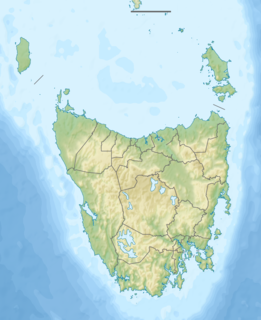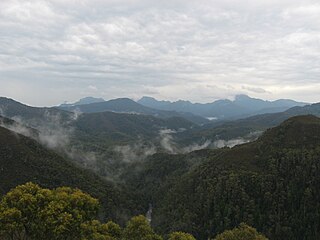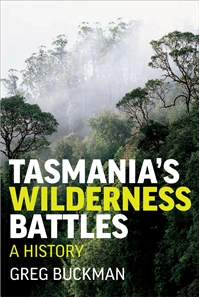
The Franklin River is a major perennial river located in the Central Highlands and western regions of Tasmania, Australia. The river is located in the Franklin-Gordon Wild Rivers National Park at the mid northern area of the Tasmanian Wilderness World Heritage Area. Its source is situated at the western edge of the Central Highlands and it flows west towards the West Coast.

Lake Pedder, once a glacial outwash lake, is a man-made impoundment and diversion lake located in the southwest of Tasmania, Australia. In addition to its natural catchment from the Frankland Range, the lake is formed by the 1972 damming of the Serpentine and Huon rivers by the Hydro Electric Commission of Tasmania for the purposes of hydroelectric power generation.

The Franklin Dam or Gordon-below-Franklin Dam project was a proposed dam on the Gordon River in Tasmania, Australia, that was never constructed. The movement that eventually led to the project's cancellation became one of the most significant environmental campaigns in Australian history.

Strahan, is a small town and former port on the west coast of Tasmania. It is now a significant locality for tourism in the region.

The Wilderness Society (TWS) is an Australian, community-based, not-for-profit non-governmental environmental advocacy organisation. Its vision is to "transform Australia into a society that protects, respects and connects with the natural world that sustains us."
West Coast Piners were groups of men who worked on the West Coast of Tasmania, Australia, logging Huon pine.

The South West Wilderness of Tasmania, Australia is a remote and inaccessible region of South West Tasmania containing unspoilt scenery, rugged peaks, wild rivers, unique flora and fauna, and a long and rugged coastline. Parts of the wilderness are more than 50 km from the nearest road, so the only access to the area is by foot, air or sea.

The Serpentine River is a major perennial river located in the south-west and western regions of Tasmania, Australia.

The Scotts Peak Dam Road is the most southerly point of road access into the south western region of Tasmania, Australia.
Olegas is an opera based on the life of Lithuanian-born Tasmanian wilderness photographer Olegas Truchanas. Music for the opera was composed by Constantine Koukias a Tasmanian composer and opera director of Greek ancestry based in Amsterdam, where he is known by his Greek name of Konstantin Koukias. The libretto was written by Natasha Cica.

The Weld Valley, located in southern Tasmania, is an area of aboriginal cultural heritage and natural history within the Tasmanian Wilderness World Heritage Area. The valley stretches north-west of Huonville and is approximately 50 kilometres (31 mi) west of Hobart.
Engineer Range is a mountain range in Western Tasmania, Australia.

The Spero River is a perennial river located in the West Coast or South West region of Tasmania, Australia.

Tasmania's Wilderness Battles: A History is a 2008 book by environmentalist Greg Buckman, who has "spent [his life] fighting Tasmanian environmental battles." The book looks at the wilderness areas of Tasmania which have been the focus of extensive conflict over environmental issues. Buckman presents a record of some of the significant events in that conflict, primarily from the viewpoint of an environmentalist.

The Prince of Wales Range is a mountain range in the South West Wilderness, Tasmania, Australia. It is situated north and parallel to the Denison River. It lies to the west of Lake Gordon, and southeast of Frenchmans Cap.
Denison River is a river in the South West Tasmania. It is within the South West Wilderness, and drains into the Gordon River below the Gordon Splits. Its catchment starts in the south of the King William Range.
Max Rupert Angus, FRSA was an Australian painter, best known for his watercolour paintings of Tasmanian landscapes.














